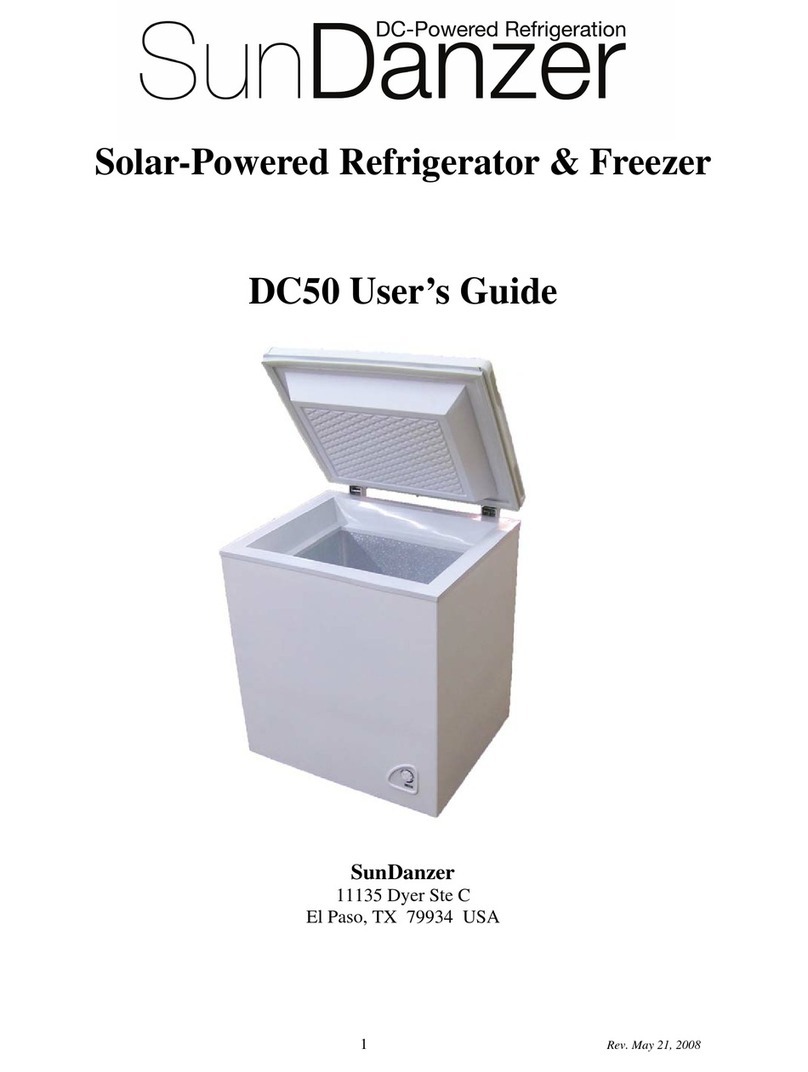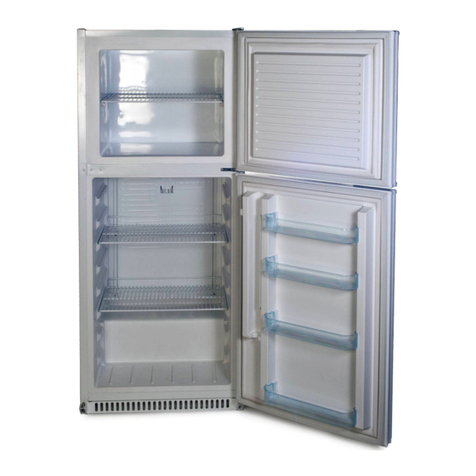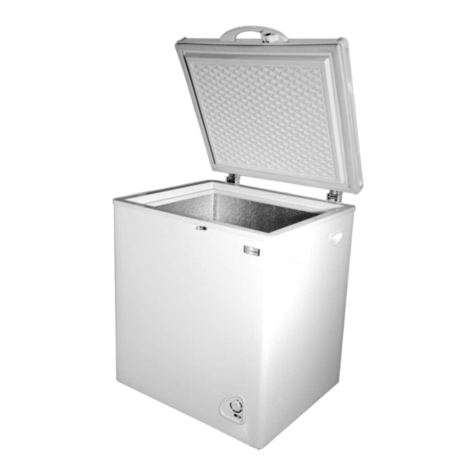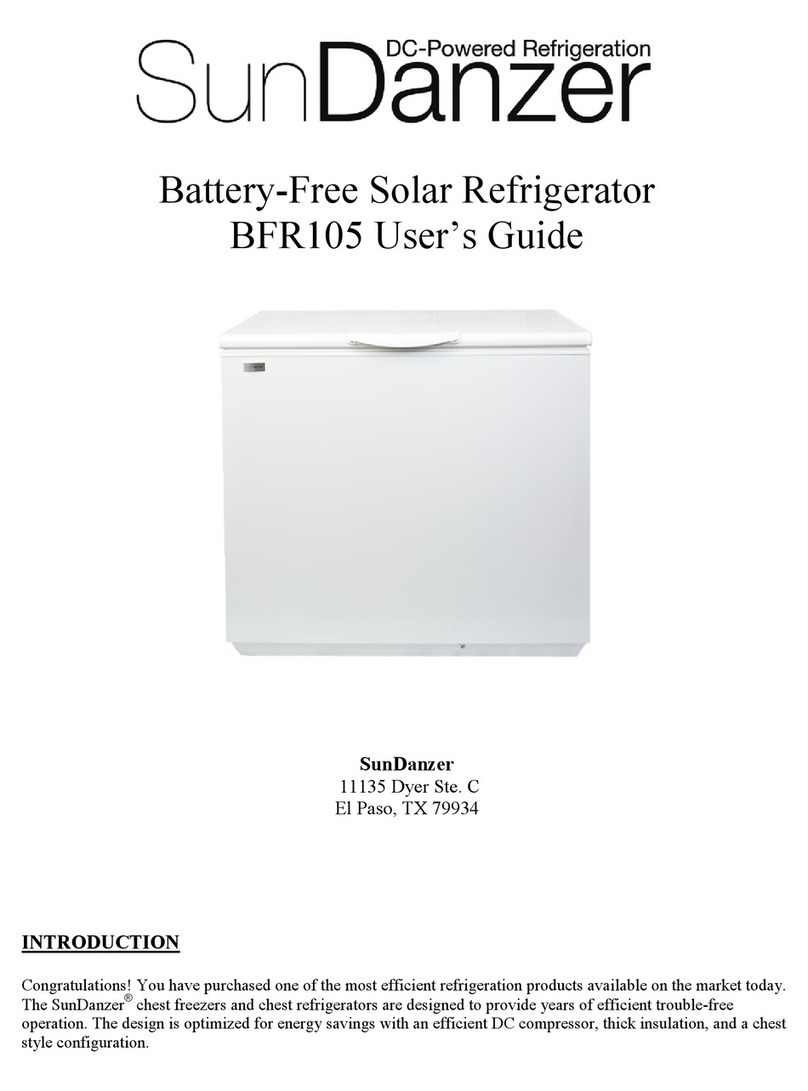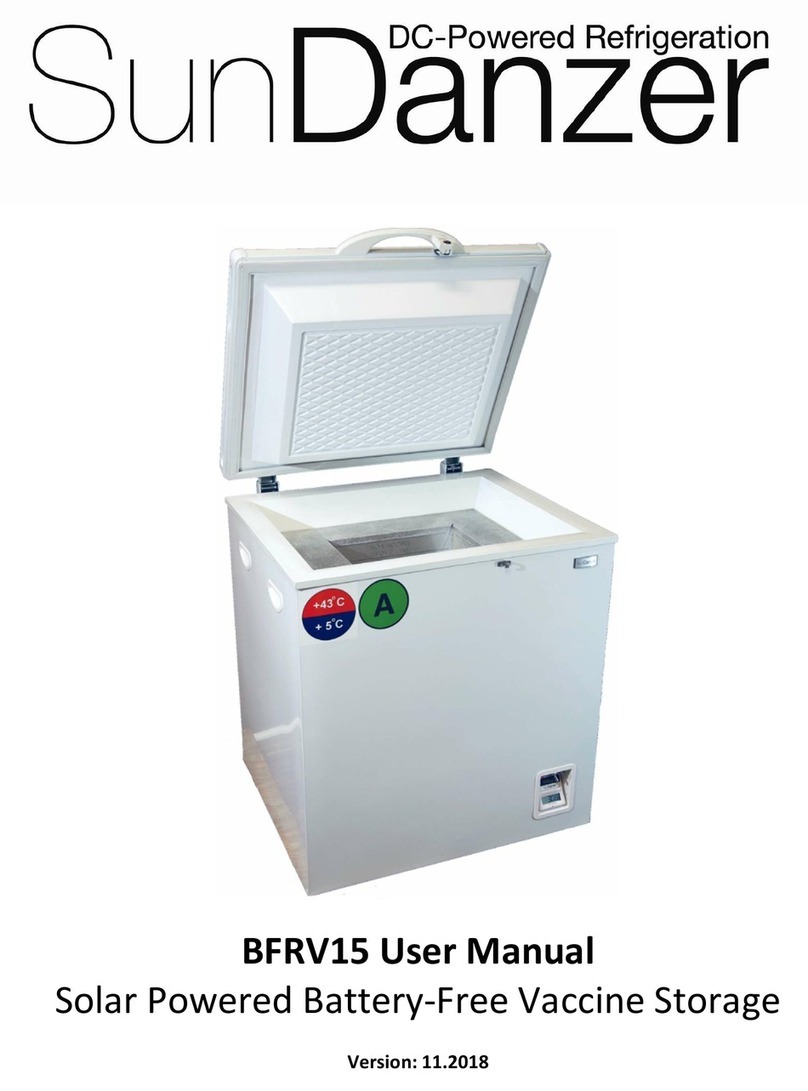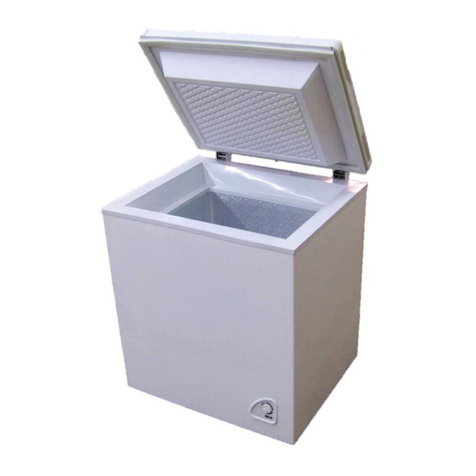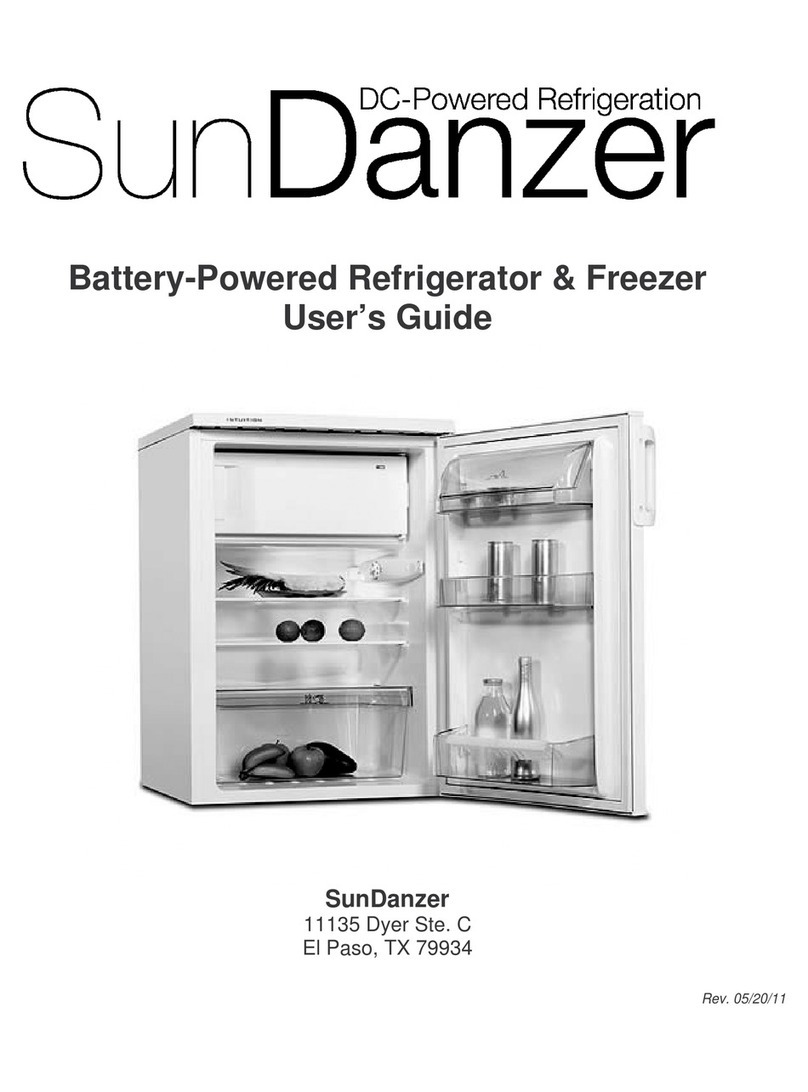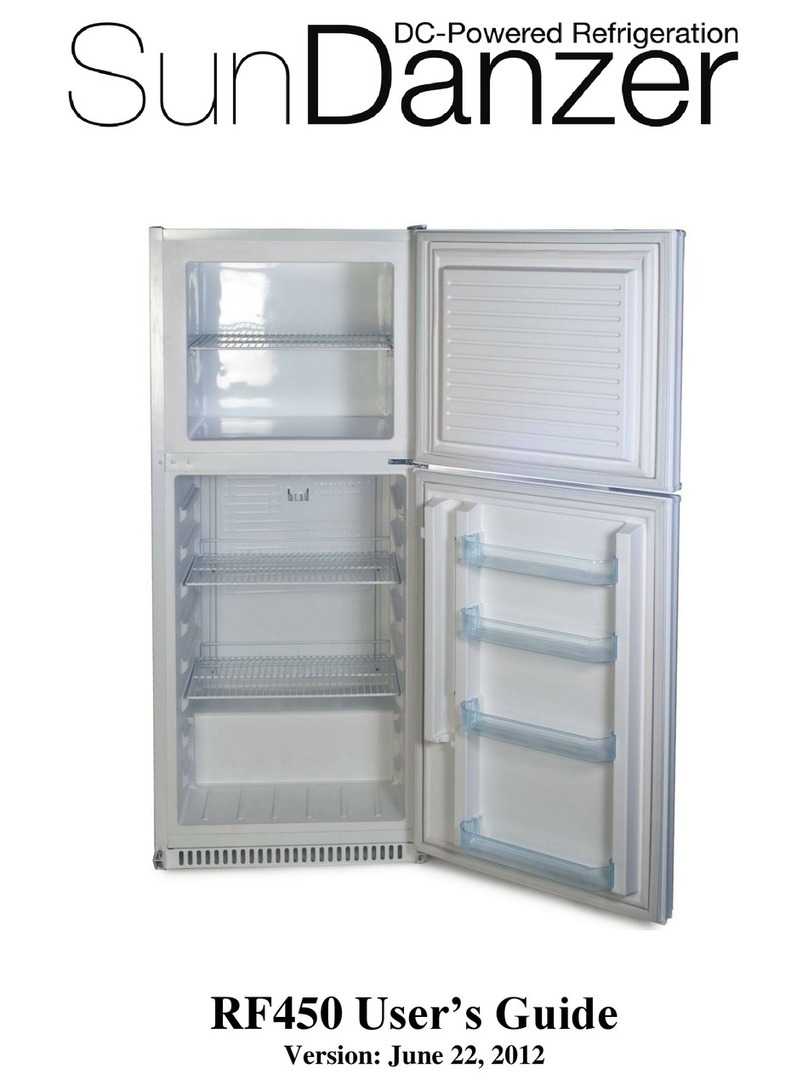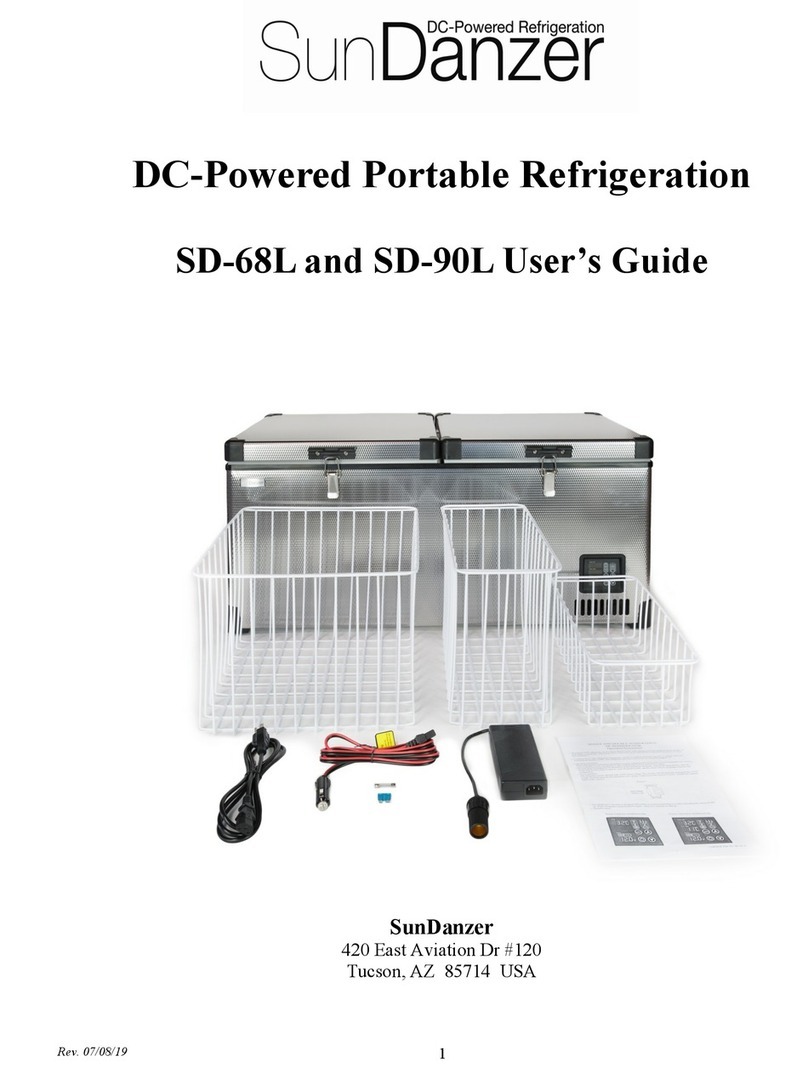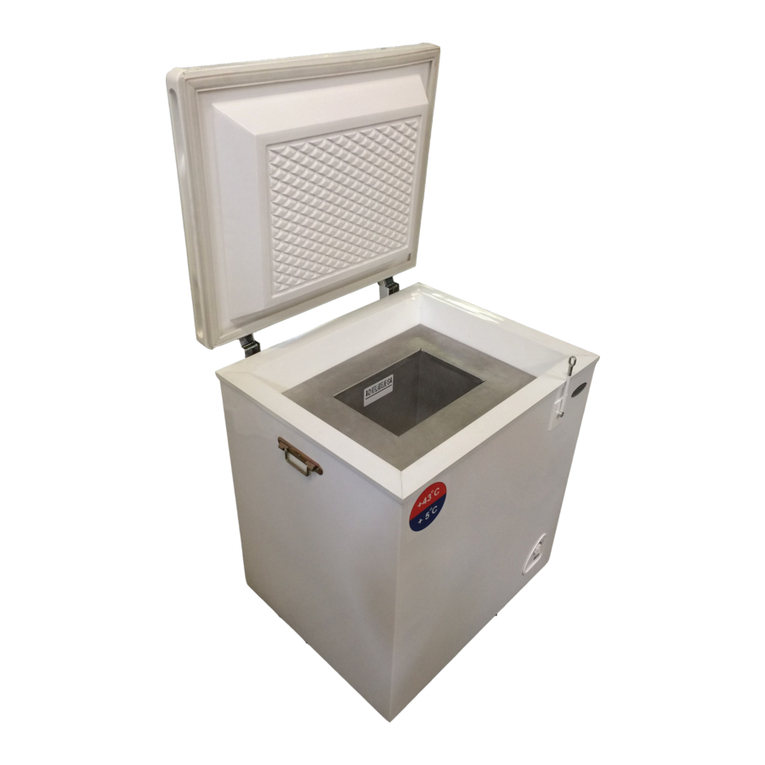Internal Cleaning
Wash the inside of the appliance with luke warm water and a mild soap. Never use abrasive or corrosive cleaning
agents, steel wool, scouring sponges, chemical cleaning agents, or highly perfumed cleaning products to clean the
interior as these will damage the surface and leave behind a strong odor. A sponge, towel, or soft brush is
recommended. Washing with a mixture of two table spoons of baking soda to 1 quart (1.14L) warm water. After
cleaning, thoroughly rinse and dry.
External Cleaning
Wash the outside of the cabinet with warm water and a mild soap or detergent. Do not use abrasive or corrosive
cleaning agents, chemical cleaning agents, steel wool or scouring sponges to complete this task as it may cause damage
to the surfaces.
Interior Light
Some units are equipped with an interior light which can be changed without the use of tools. Be careful to always use
a dual voltage 12/24 VDC light bulb. If a 12/24V bulb is not available, use a 24V light rated at 10 watts of less. It will
be dim with a 12V system, but it will be safe!
HINTS & TIPS
Normal Operating Sounds
•A thermostat controls the compressor and you may hear a 'click' when the thermostat cuts in and out.
•You may hear faint gurgling or bubbling sounds when the refrigerant is pumped through the refrigerant coils.
•The compressor is quiet and can only be heard in a quiet room.
Energy Saving Advice
•Do not install the appliance close to sources of heat, such as a stove, boiler, heater, chimney, etc, and avoid
exposure of the appliance to direct sunlight.
•Also allow adequate spacing around the cabinet for air circulation (3in. or 7.5cm)’Warmer thermostat setting
require less energy to maintain
•Avoid unnecessary frosting in the cabinet by packing all food and liquids in airtight packages or containers.
•Always keep foodstuff stored in tightly sealed packaging or containers, and allow some space for air to circulate
around each item.
•Avoid keeping the lid open for extended periods of time or opening the lid too frequently as warm air will enter the
cabinet and cause the compressor run unnecessarily often.
•Ensure there are no obstructions preventing the lid from closing properly and forming a tight seal.
TROUBLE SHOOTING
Before contacting a service technician, SunDanzer or your local product dealer, check the following points.
If you call out a technician to a fault listed below, or to repair a fault caused by misuse, abuse, or faulty installation, a
charge will be made even if the appliance is under warranty.
•Check if 12 or 24V DC is present at the appliance. If not check all connections
and the system battery voltage.
•Check that the polarity is correct “+” is connected to “+” and “–“ to “–“.
•Check the fuse. If blown, replace with a new one.
•The main common problem with installations is voltage drop to the compressor
which causes the unit to fail to start due to “Low Voltage.” Typically, a
connection is not as tight as it should be, or the wire size to the compressor is too
small. The low voltage problem occurs at the instant of start-up and is
sometimes difficult to detect with a volt meter because the event is very quick
(<100 ms)

